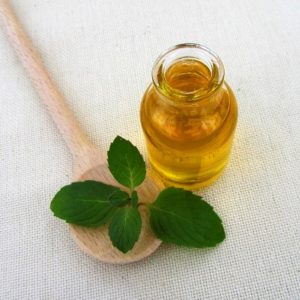 There are many wonderful herbs and plants that are powerful natural healers and have been used by humans long before antibiotics and other modern medicines were even an idea.
There are many wonderful herbs and plants that are powerful natural healers and have been used by humans long before antibiotics and other modern medicines were even an idea.
When most people hear of peppermint, they think of candy as well as all the ways peppermint is used in their home.
You see peppermint in your home in your bath products, mouthwashes, toothpaste, ointments, candies, and gum. However, the uses of peppermint go way beyond those things.
While it is the peppermint oil that gets most of the credit for being the source of the benefits peppermint brings, in reality compounds in the peppermint leaf have also been proven to be beneficial.
A combination of the peppermint extract and peppermint leaves can bring you a wide range of health benefits, as we are going to see below.
Allergies
The extract from the peppermint leaf is thought to inhibit histamine release. This inhibition suggests that peppermint may help to alleviate symptoms relating to hay fever and other allergies, as well as asthma.
Colds and Flu
Peppermint Oils are both an expectorant and a decongestant, which can help to clear out your respiratory tract when you are suffering from a cold or the flu. You can relieve a cough and cold symptoms by either using peppermint in cold run on your chest or inhaling it through a vaporizer.
Dental Cavities
Powdered peppermint leaves have been used historically to freshen breath and whiten teeth. Peppermint extract has also been shown to be more effective than chlorhexidine, which is the common mouthwash chemical, in inhibiting the formation of biofilm formations that are linked to dental cavities.
Gastrointestinal Disorders
The main ingredients in peppermint, menthol, and methyl salicylate, have antispasmodic effects, which calm the gastrointestinal tract. This makes it an effective treatment for indigestion, flatulence, bloating, irritable bowel syndrome, and many other gastrointestinal problems.
Muscle Pain
The antispasmodic properties that are contained in peppermint help to relieve muscle spasms and pain. You can add peppermint into your bath water, or use peppermint oil and massage it into the sore muscles.
Nausea
The smell of peppermint has been shown to relieve nausea due to morning sickness. A study that was done in 2013 found that peppermint oil was an effective treatment for reducing chemotherapy-induced nausea.
Shingles
Shingles is a condition that features neuropathic pain, which a study conducted in 2002 showed to be improved by topical peppermint oil and its therapeutic effects continued into a two month follow up with study subjects.
Skin and Hair
Peppermint has both antiseptic and antibacterial properties. These properties help to cool and moisturize your skin and also can help to remove dandruff and head lice from your scalp.
Stress
Peppermint oil is both cooling and energizing. When you are feeling stressed, you can add a few drops into your bath
Tension Headaches
Peppermint oil contains anti-inflammatory properties that are effective in treating tension headaches. You can apply a few drops to your wrist, or sprinkle a few drops on a cloth and inhale the aroma. As an alternative, you can also massage the oil directly onto your temples and forehead.
Usage
There are many ways you can take peppermint. You can use the peppermint leaves to make a tea, use the oils in a capsule, or mix the peppermint oil in a carrier oil for topical use.
You can also use pure essential peppermint oil in your baths, or make homemade drops to treat coughs.
As you can see, peppermint is much more than just a candy or toothpaste flavoring. Using peppermint in your daily life can bring many benefits, and it is easy to grow and maintain and would be a great addition to any home herb garden.






